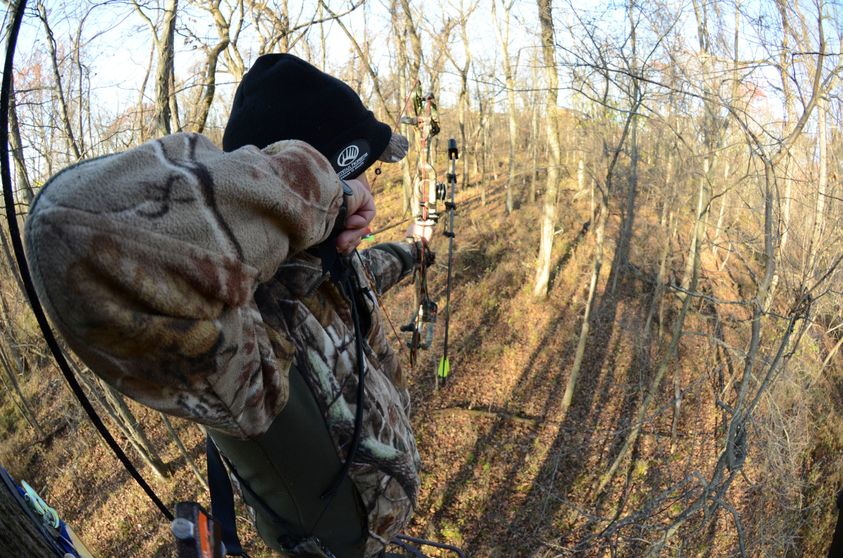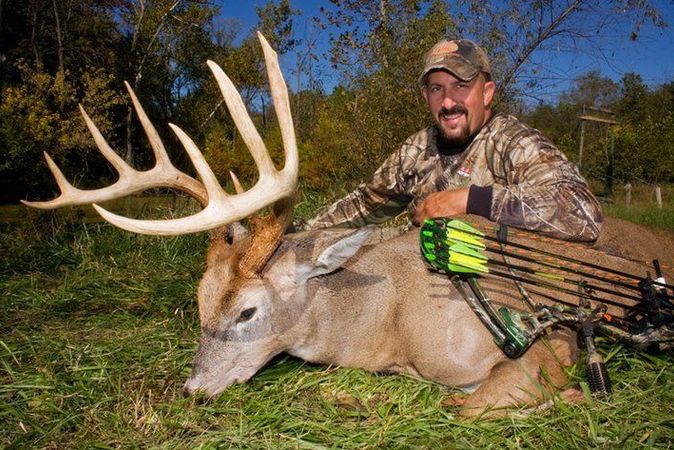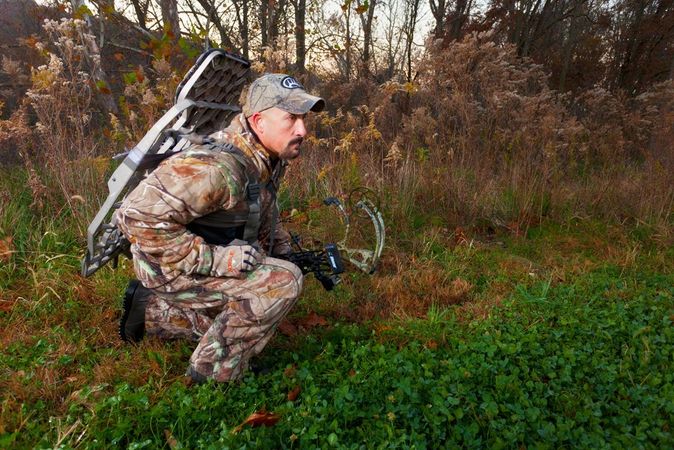As illustrated on many hunting videos, deer can flat duck arrows! However, it’s important to note they are not intentionally ducking arrows. They are merely reacting to the twang of a bowstring or the sound of the arrow in flight by crouching down to lunge away and flee from potential danger. Therefore, I recommend aiming at the lower half of the deer’s lung area; especially if he is alert. This way, if he crouches to lunge you will get mid to upper lung, and if he doesn’t react you’ll hit where you were aiming and penetrate the deer’s lower lungs. Either scenario is lethal.
Of course, the actual spot you anchor you sight pin on the deer’s vitals will depend on the acuteness of the angle and how close the deer is standing. For example, if the deer is standing 15 yards from the base of your tree and your 25 feet up, you would obviously have to aim higher than the lower half of the deer’s lung area. Otherwise, if the deer does not react, at best, your arrow would only penetrate the very bottom of one lung. Still, keep in mind, if you stopped that deer vocally and he’s at full alert, there’s an extremely high chance that he’s ducking.
There are four other important considerations: 1, how quiet is your bow; 2, how quiet are your vanes or fletching; 3, how quiet are woods, and number 4, how fast is your arrow getting to the target.
If an un-alert deer is standing 35 or 40 yards from the base of your tree and your bow and vanes are very quiet, then it may be safe to aim at the center if his lung area. This way you’ll have a little more room for yardage error. By the same token, if it’s windy or you’re near a flowing creek, oil pump, clanging windmill or any other situation that would mask the sound of your bow and the sound of your vanes or fletching in flight, you may also opt to aim for the center of the deer’s lungs. However, under typical conditions: When your stand is 15 to 20 feet high in a tree and the deer is standing between 20 to 30 yards away, I recommend you anchor your sight pin on the lower half of its lung area.
Here are a couple additional points: always pay close attention to the deer’s hips shoulders and legs to determine the angle the deer is standing, sometimes a deer can look like he’s standing broadside when he is actually quartering to, or away from you. The key is to pinpoint where on the deer’s anatomy you will have to anchor your sight pin in order to penetrate both lungs.
In a nut shell: when hunting trophy bucks don’t settle, set your sights high, but aim low...
- Dan Perez







